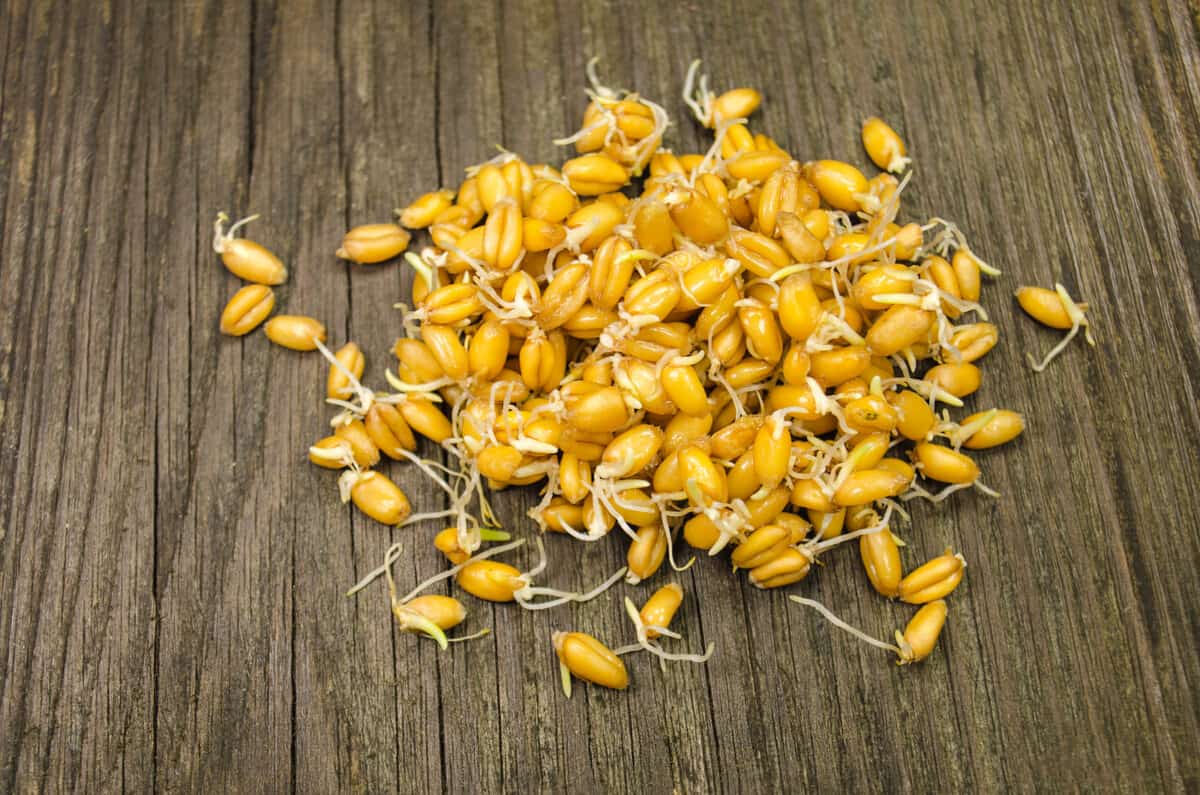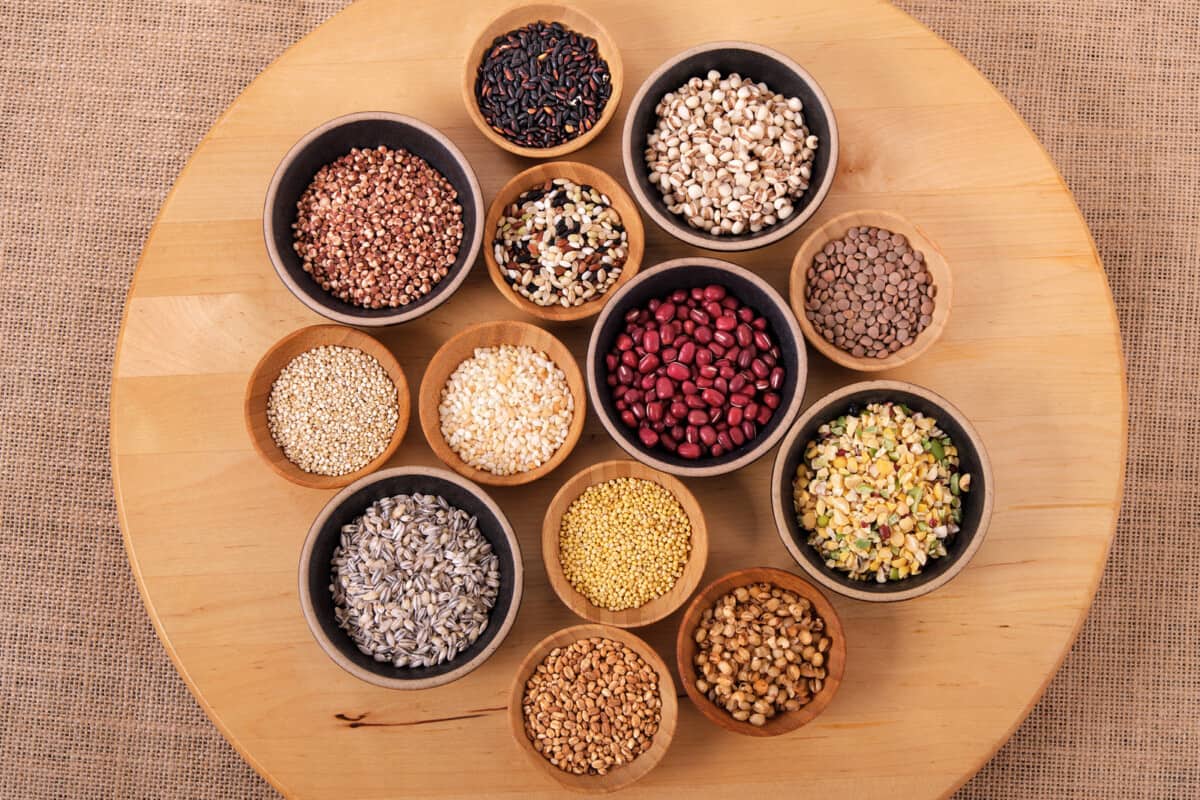The 7 Best Grains to Make Rejuvelac and Why to Use Each of Them
Rejuvelac is an astonishing probiotic drink made from sprouted grains fermented in water. You can make this beverage with different grains, so I did some research to find out the best grains to use to make rejuvelac.
The best grains to make rejuvelac are:
- Quinoa
- Wheat Berries
- Buckwheat
- Brown Rice
- Millet
- Rye Berries
- Barley
The grains on the list above are the most popular ones I found on the internet and each of them appears to generate a particular flavor and have different characteristics. I will get to that later.
A disclosure I feel obliged to make is that quinoa and millet are not actually grains, but seeds. Nevertheless, they are exceptional options for the preparation of rejuvelac.
I divided this article into categories I think are relevant when choosing the right grain for you. On the bottom, there is a table that summarizes all this info, so if you are in a hurry or already have some knowledge on the subject, just scroll down. If not, take a look at the topics below and see which one is the best grain for you.
Gluten-Free vs Not Gluten-Free
The first distinction that comes to mind is that some of the grains are gluten-free and some are not. For some people, it won’t matter, but for many others this is essential.
If you are coeliac, be sure to choose one of the gluten-free grains. Fermentation does break some of the carbs and gluten in the grain but does not eliminate them.
| Gluten-Free | Non-Gluten-Free |
|---|---|
| Quinoa | Wheat Berry |
| Buckwheat | Rye |
| Brown Rice | Barley |
| Hulled Millet |
Prices
Price is another important factor to be examined when buying your grains. Of course, the prices are gonna vary between cities and stores, but they normally follow a pattern when it comes to which ones are cheaper and which ones are more expensive.
It is also possible to buy grains online. For this article, I will analyze the prices per kg on Amazon UK and Amazon US. The goal is to be able to classify the grains from the most expensive to the cheapest.
| Grain | Price/Kg |
|---|---|
| Quinoa | €10,85 |
| Buckwheat | €9,12 |
| Rye | €8,42 |
| Millet | €5,04 |
| Wheat | €4,52 |
| Barley | €4,44 |
| Brown Rice | €3,33 |
| Grain | Price/LB |
|---|---|
| Quinoa | $8,75 |
| Rye | $8,50 |
| Barley | $8,00 |
| Buckwheat | $6,50 |
| Wheat | $6,12 |
| Millet | $5,99 |
| Brown Rice | $3,00 |
Even though there are differences in the rank from the most economical to the more expensive grain, in both regions Brown Rice is the most affordable and Quinoa is the most costly.
Time Sprouting

Another aspect to consider is when you need your rejuvelac for. Each kind of grain will sprout at a distinct time, but a good rule of thumb is to soak overnight and leave two days for sprouting. Another factor that has an important role in this process is the temperature in the environment the grains are sprouting.
Below, there is a table with the average sprouting time of each of the grains considered in this article.
| Grain | Time sprouting |
|---|---|
| Quinoa | 36-48 Hours |
| Buckwheat | 36-48 Hours |
| Wheat | 2-3 Days |
| Millet | 1-3 Days |
| Brown Rice | 2-4 Days |
| Barley | 2-3 Days |
| Rye | 48 Hours |
This is just a guideline, remember to rinse your grains every 8 hours or so and keep an eye on them. If it is summer or you live in a warmer country, they can sprout much faster. Or the opposite if they are left in a colder environment.
Difficulty to Sprout
In general, sprouting is a fairly easy process and can even be done without us realizing it. I mean, who has never overlooked some lentils soaking and when realized they had tiny tails? But some grains can be easier to sprout than others.
Quinoa is one of the easiest, alongside wheat. Brown Rice and Buckwheat are knowingly hard to sprout. Some brown rice types are even non-sproutable if they’ve had their core removed. However, there are people who make rejuvelac with brown rice without sprouting it and have great results. I haven’t done it yet, but as soon as I do it, I will update it here.
Buckwheat produces a sort of goo after soaking. To avoid mold, you need to pay special attention when rinsing and do it properly.
Flavor
Rejuvelac has a different taste depending on the grain used to make it. Quinoa will have a soft and lemony flavor. Wheatberry rejuvelac is also citrusy but has a stronger and muskier flavor.
About the other grains, I don’t know yet. There is not a lot of information online, so I decided to take this matter into my own hands! My plan is to make one at a time. After each batch using a different grain, I will update this post!
Summary
Here is the table I promised you before, so you can find really quickly which one is the best grain for you.
| Grain | Gluten | Price | Time Sprouting | Sprouting |
|---|---|---|---|---|
| Quinoa | Gluten-Free | High | 36-48 hours | Easy |
| Buckwheat | Gluten-Free | Medium-High | 36-48 hours | Hard |
| Wheat | Gluten | Medium-Low | 2-3 Days | Easy |
| Rye | Gluten | High | 48 Hours | Medium |
| Barley | Gluten | High | 2-3 Days | Medium |
| Millet | Gluten-Free | Low | 1-3 Days | Medium |
| Brown Rice | Gluten-Free | Low | 2-4 Days | Hard |
But how do you use this table? Don’t worry, I will give you some examples below.
- You are avoiding gluten and you have never sprouted anything. So, you start looking at the first column for the gluten-free grains. You have four options: buckwheat, quinoa, millet, and brown rice. Supposing you want to start with an easier one, the grain that is easy to sprout and is gluten-free is quinoa! So this would be the best choice for you.
- Continuing on the same scenario above, but with one new piece of information. You are not willing to spend more money, you are looking for a cheaper option. Then, you would choose brown rice, but not sprout it to prepare the rejuvelac.
- Staying on the same hypothesis, but with one small twist: instead of avoiding gluten, you don’t mind it. So, you are looking for something easy to sprout and cheap. The best choice would be wheatberry.
I hope this helped! Any questions, please contact me, and I will do my best to help!

